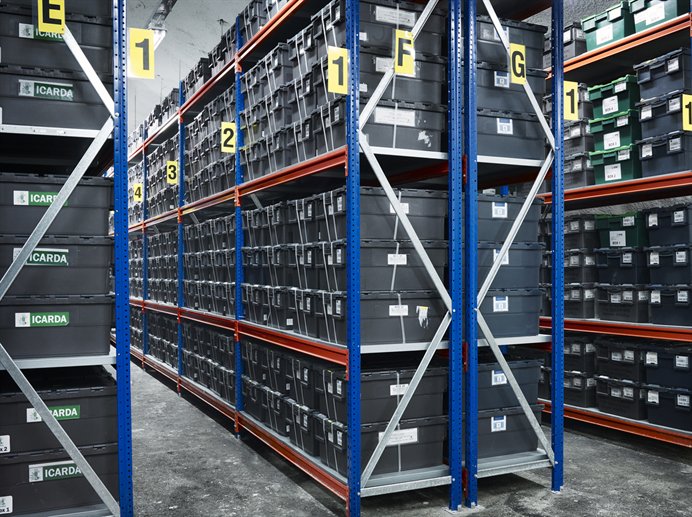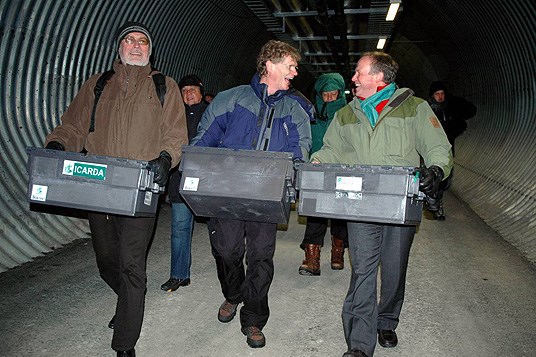It is a fail-safe seed storage facility, built to stand the test of time — and the challenge of natural or man-made disasters. The Seed Vault represents the world’s largest collection of crop diversity.
The need
Worldwide, more than 1,700 genebanks hold collections of food crops for safekeeping, yet many of these are vulnerable, exposed not only to natural catastrophes and war, but also to avoidable disasters, such as lack of funding or poor management. Something as mundane as a poorly functioning freezer can ruin an entire collection. And the loss of a crop variety is as irreversible as the extinction of a dinosaur, animal or any form of life.
The purpose
It was the recognition of the vulnerability of the world’s genebanks that sparked the idea of establishing a global seed vault to serve as a backup storage facility. The purpose of the Vault is to store duplicates (backups) of seed samples from the world’s crop collections.
Permafrost and thick rock ensure that the seed samples will remain frozen even without power. The Vault is the ultimate insurance policy for the world’s food supply, offering options for future generations to overcome the challenges of climate change and population growth. It will secure, for centuries, millions of seeds representing every important crop variety available in the world today. It is the final back up.
The location
The Vault is in an ideal location for long-term seed storage, for several reasons

Svalbard is the farthest north a person can fly on a scheduled flight, offering a remote location that is nevertheless accessible.
Svalbard is the farthest north a person can fly on a scheduled flight, offering a remote location that is nevertheless accessible.
The area is geologically stable and humidity levels are low.
The Vault is well above sea level, protected from flooding.
The permafrost offers natural freezing, providing a cost effective and fail-safe method to conserve seeds.
The storage
The Seed Vault has the capacity to store 4.5 million varieties of crops. Each variety will contain on average 500 seeds, so a maximum of 2.5 billion seeds may be stored in the Vault.
Currently, the Vault holds more than 860,000 samples, originating from almost every country in the world. Ranging from unique varieties of major African and Asian food staples such as maize, rice, wheat, cowpea, and sorghum to European and South American varieties of eggplant, lettuce, barley, and potato. In fact, the Vault already holds the most diverse collection of food crop seeds in the world.
The focus of the Vault is to safeguard as much of the world’s unique crop genetic material as possible, while also avoiding unnecessary duplication. It will take some years to assemble because some gene banks need to multiply stocks of seed first, and other seeds need regenerating before they can be shipped to Svalbard.
For a complete overview of the samples stored in the Vault, please visit Nord Gen’s public online database.
A temperature of -18ºC is required for optimal storage of the seeds, which are stored and sealed in custom made three-ply foil packages. The packages are sealed inside boxes and stored on shelves inside the vault. The low temperature and moisture levels inside the Vault ensuring low metabolic activity, keeping the seeds viable for long periods of time.
An international black box system

The depositors who will deposit material will do so consistently with relevant national and international law. The Seed Vault will only agree to receive seeds that are shared under the Multilateral System or under Article 15 of the International Treaty or seeds that have originated in the country of the depositor.
Each country or institution will still own and control access to the seeds they have deposited. The Black Box System entails that the depositor is the only one that can withdraw the seeds and open the boxes.











No comments:
Post a Comment